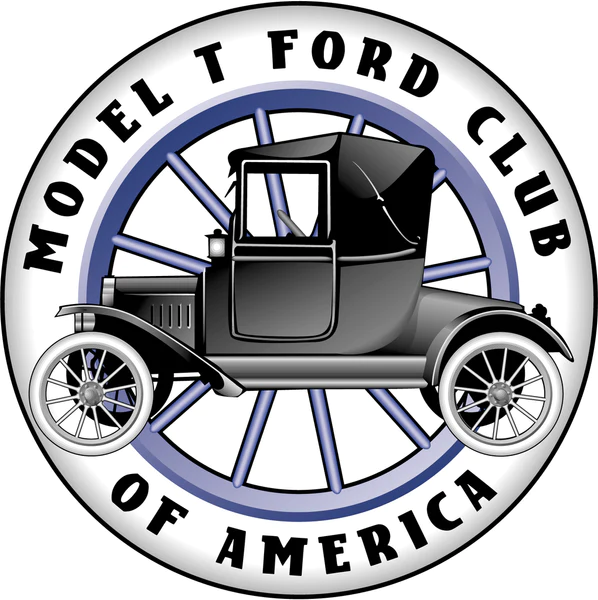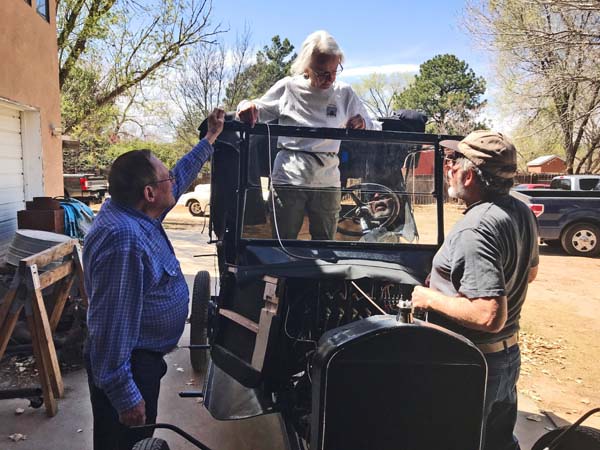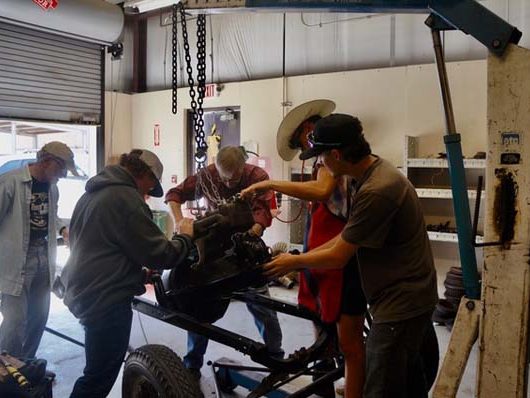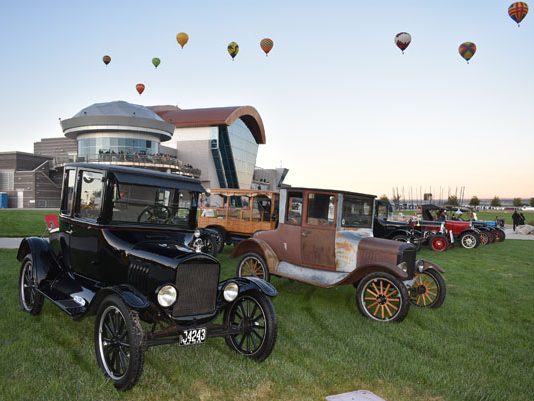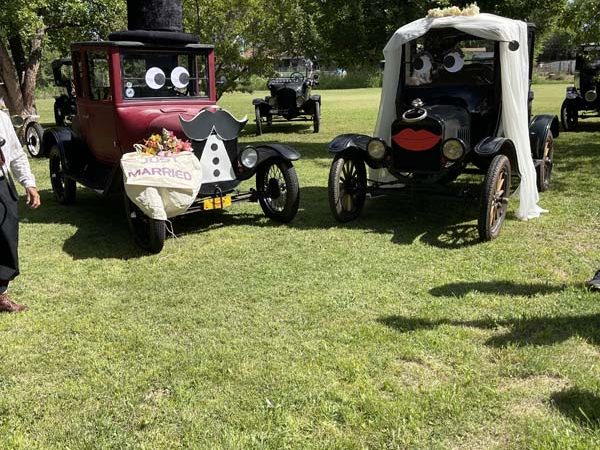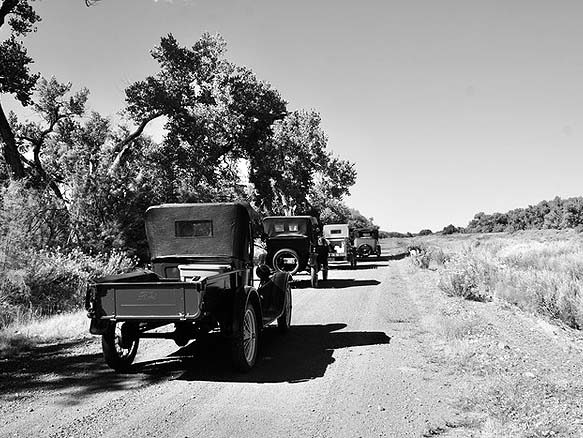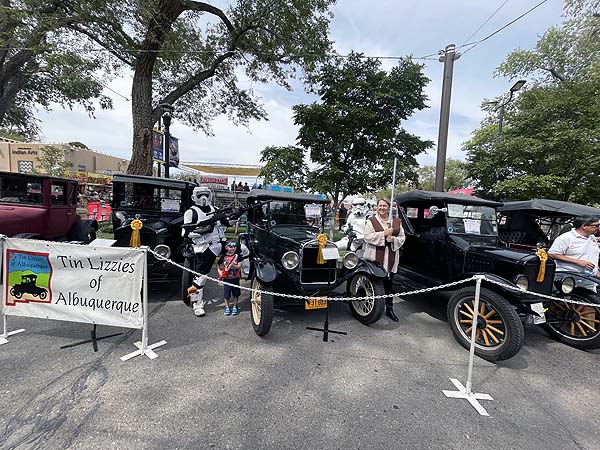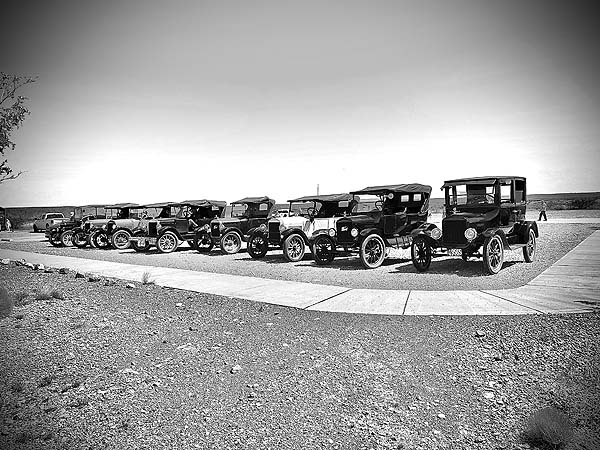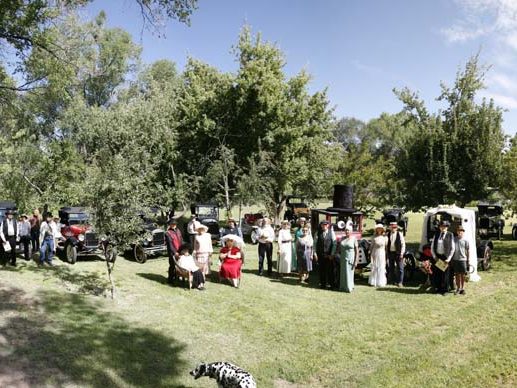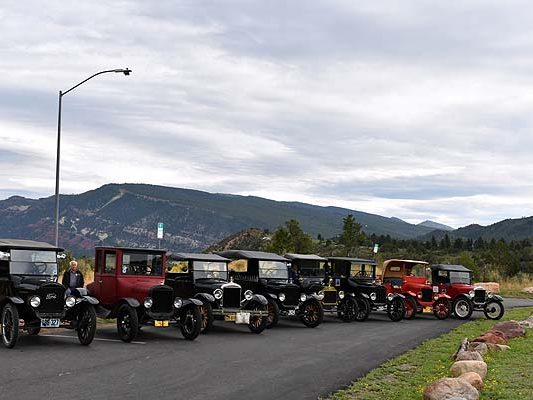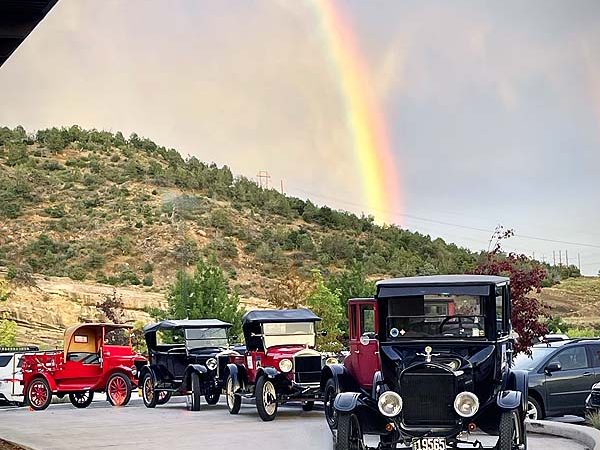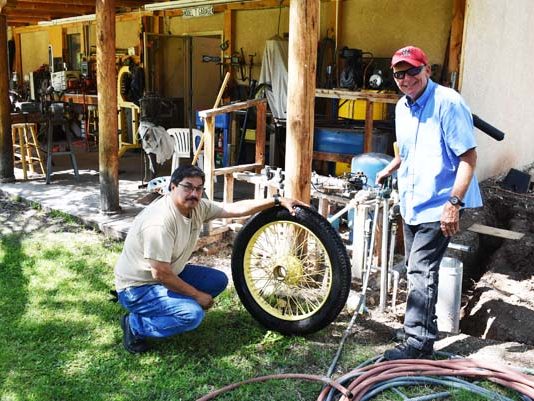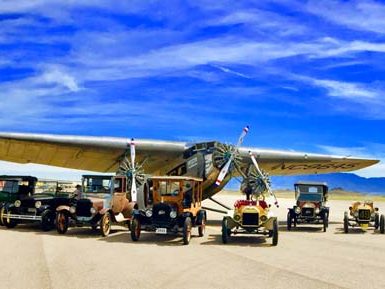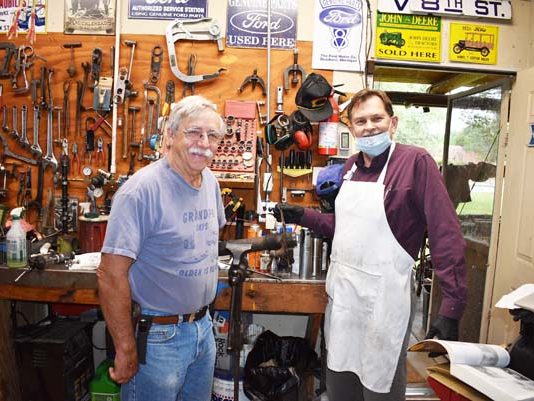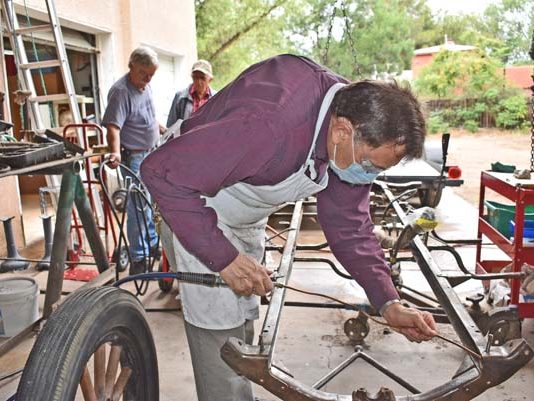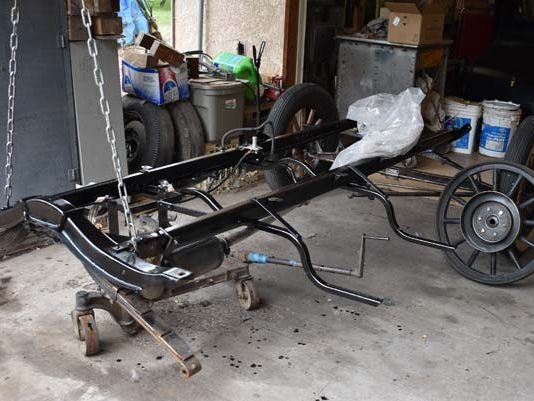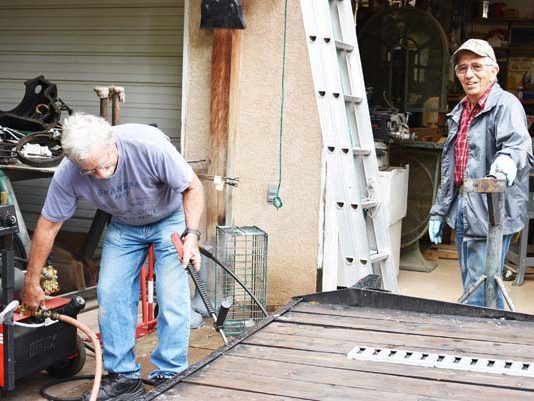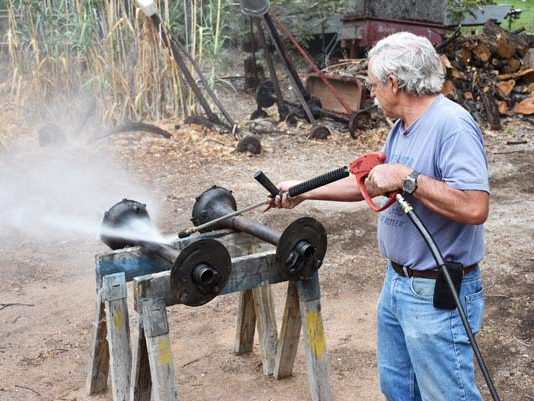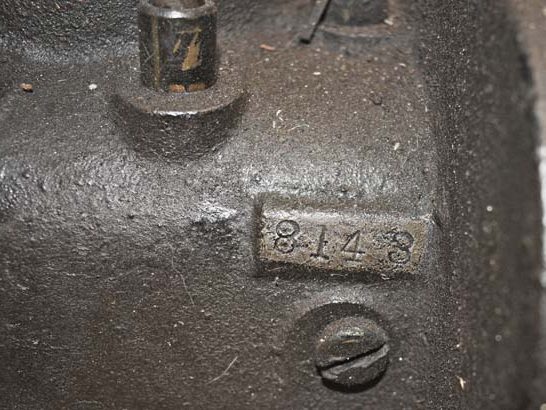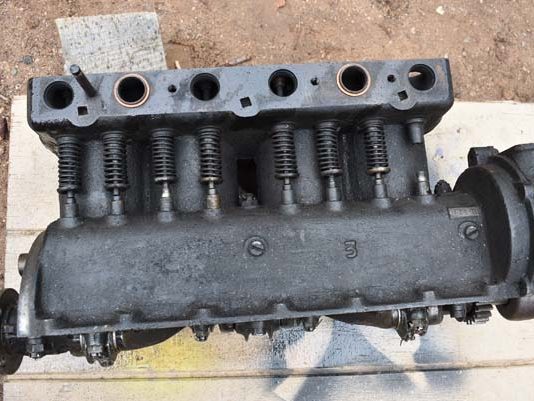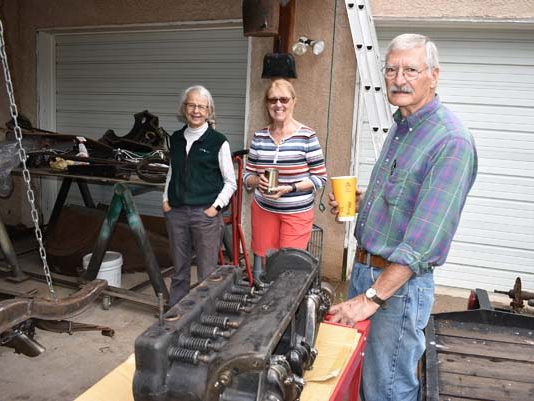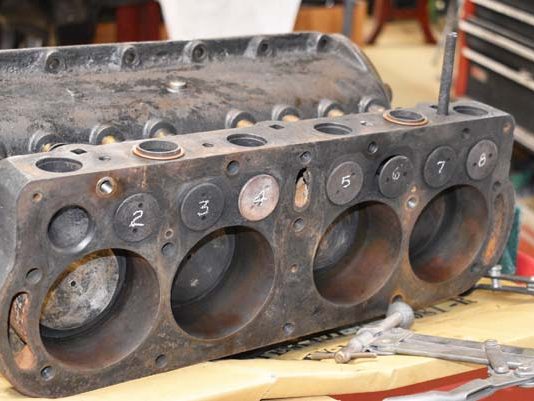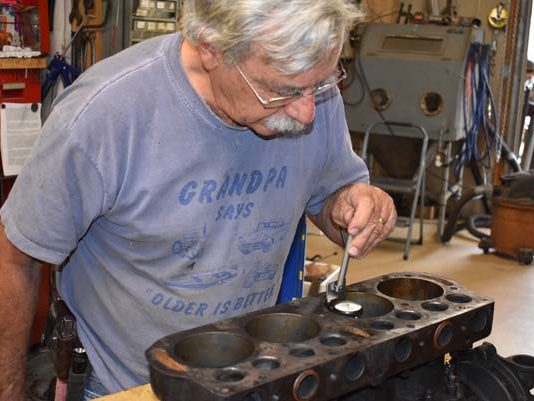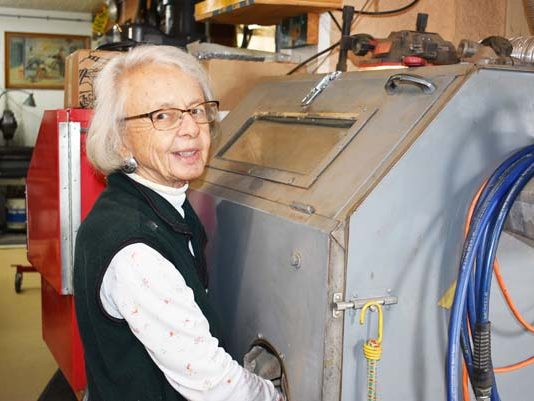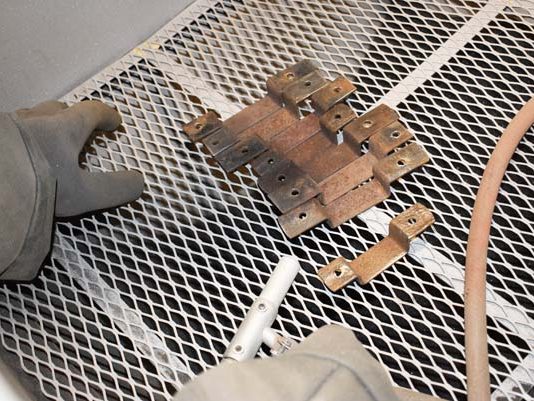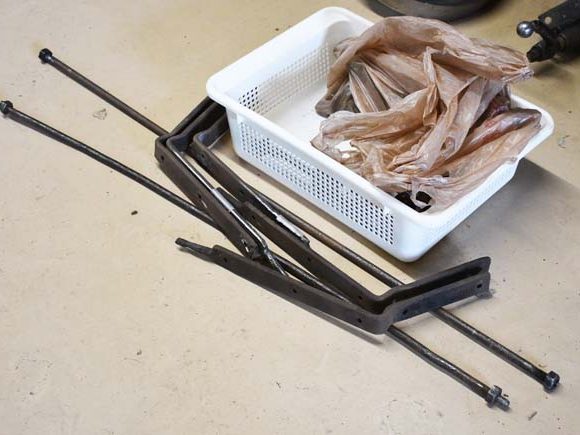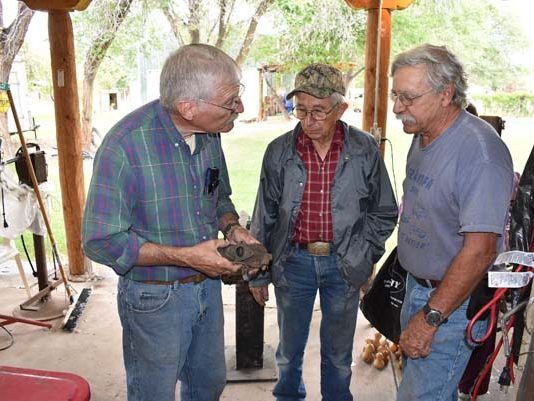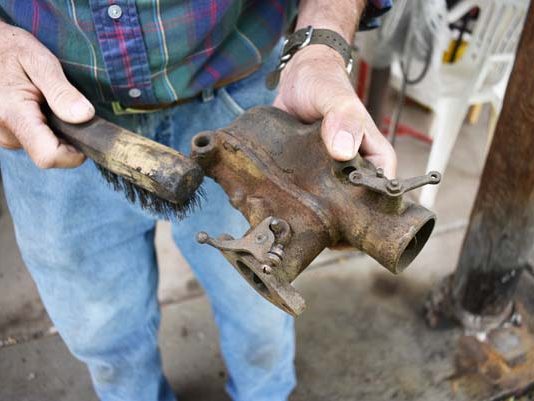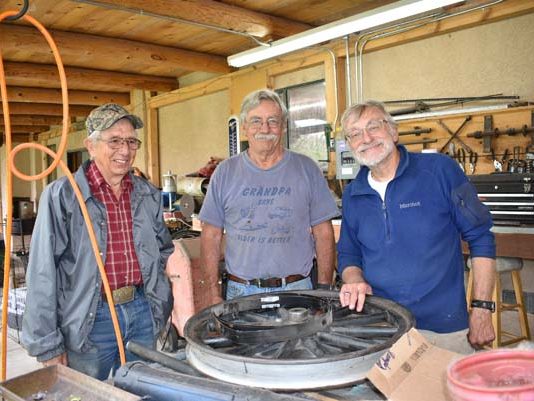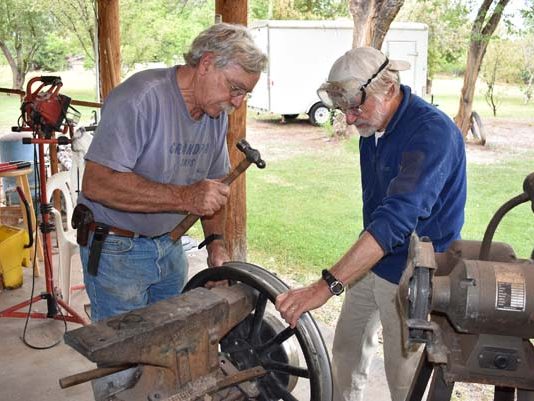Story and photos by Mark Wing
There were several projects underway on this work day at Larry’s Garage. Don Neidigk was continuing work on his 1926 Model T coupe, Mark Wing brought a 1909 engine block for Larry’s condition assessment, Paul and Marilyn Duncan continued work on their 1918 pickup truck project, and Dave Ferro was working on a carburetor for his 1926/27 speedster.
Don Neidigk is making good progress on his 1926 Coupe restoration. At a previous work day, Larry had blasted the frame of oil, grease, and dirt. On this day Don was cleaning the frame in preparation for painting. Larry also used his commercial-grade hot water blaster to clean Don’s rear differential housings.
Mark Wing had recently purchased a 1909 project car from the estate of a collector in Southern California. The car was being advertised on the MTFCA Classifieds and the sale was being brokered by Kim Dobbins, one of the foremost experts in early Model T’s in the world. This car is engine number 8143, with a build date of August 2, 1909. Ford advertised that August 1, 1909 (engine 8101) would signal the beginning of the 1910 Model year cars, but in reality, there were initially no changes between the 1909 and 1910 Model year cars. During this period, there were a lot of evolutionary changes as Ford was seeking ways of making their cars mechanically more robust, easier to service, more reliable, and less costly to manufacture. 1909 and 1910 Model T’s represent the early stages of Model T evolution with their open-valve engines, 1-piece (non-removable door) engine pans, and weak rear differential housings.
On this work day at Larry’s Garage, the engine was brought for Larry’s assessment. The engine was advertised as being stock bore, but it turned out not to be correct. Once the carbonization had been scraped off of the tops of the pistons, they revealed that the block had been bored to 0.040″ oversized. The pistons were also aluminum. The valves were the original 2-piece style and the lifters were a bit worn but are believed to be original. At some point in its history, valve guides were installed. Larry measured the bores and found them to be in good condition – still round and having parallel walls. This information coincides with the story relayed by the third owner (in his eighties) who purchased the car in Minnesota in 1958. It was he who rebuilt the engine, installed the aluminum pistons, and occasionally drove the car in parades. He had also converted the car to right-hand-drive, and there is evidence on the frame that it did have some holes that have since been filled for the steering column mount and brake quadrant on the passenger’s side of the frame. The engine block appears to be in very good condition overall with no signs of cracks or having been re-sleeved.
To lessen the possibility of future engine block damage, the crankshaft will be replaced with a stock-sized balanced SCAT crank, the older-style aluminum pistons will be replaced with lighter 0.040″ pistons, the heavy early-style rods will be replaced with the light weight ones, and 0.015″ oversized 1-piece valves will be used. Oversized lifters (0.015″) should reduce oil leakage from this open valve engine. When the crankshaft was removed, it showed that it was running against the cast iron engine block as would be expected of an original 1909 engine. These early engines had Babbitt on the main bearing caps only, and not on the block. Some engine rebuilders bore the block to allow for babbitting instead of having the crankshaft rotate against cast iron.
Paul and Marilyn Duncan brought wheels for their 1918 pickup truck and parts for the pickup bed to be media blasted. Dave Ferro was cleaning a Model A carburetor for use on his 1926/27 speedster project.
Thank you Larry for a fun and productive work day at your garage!
